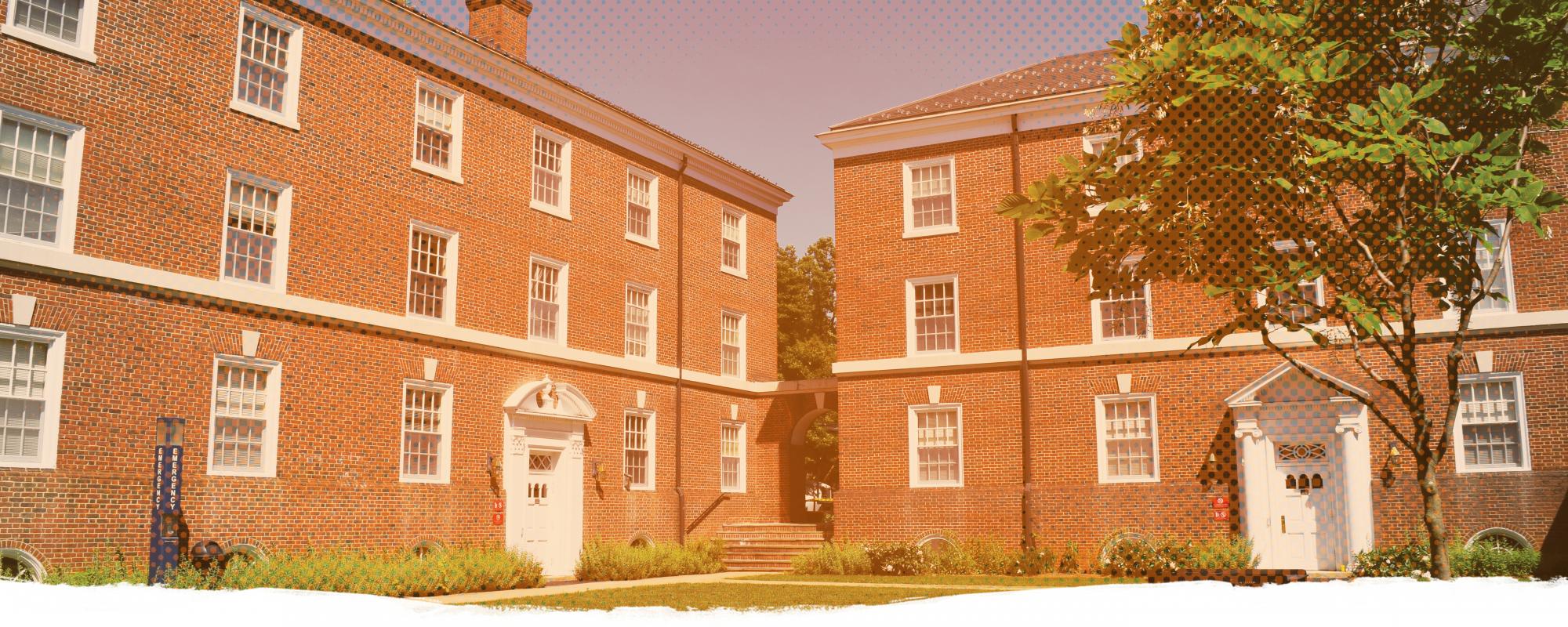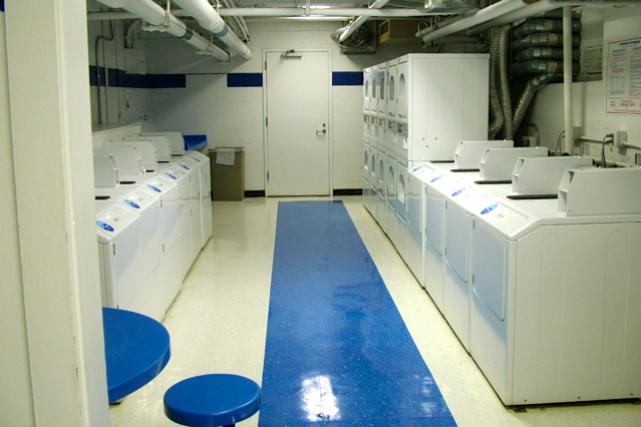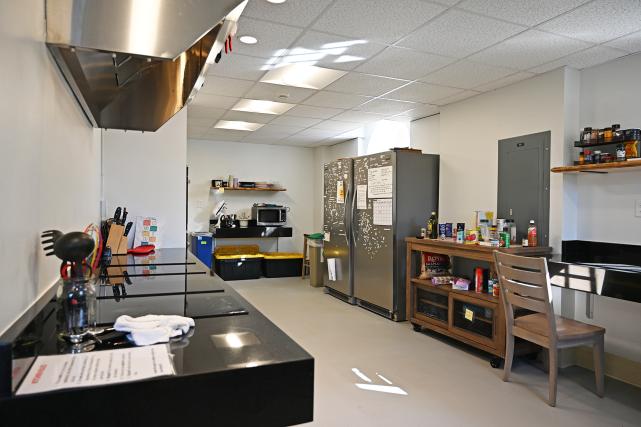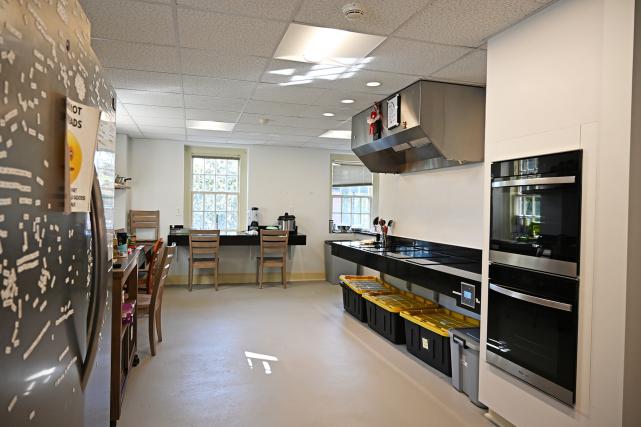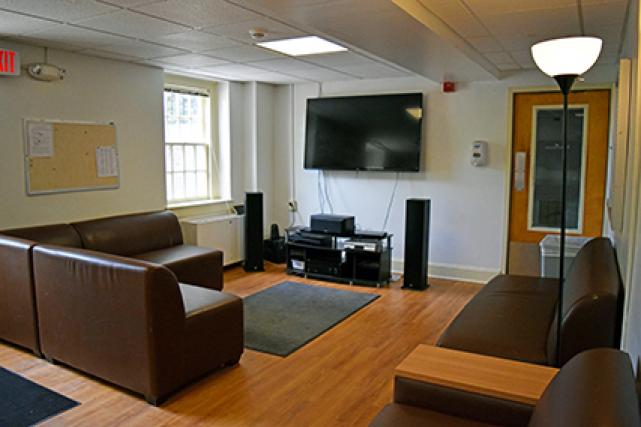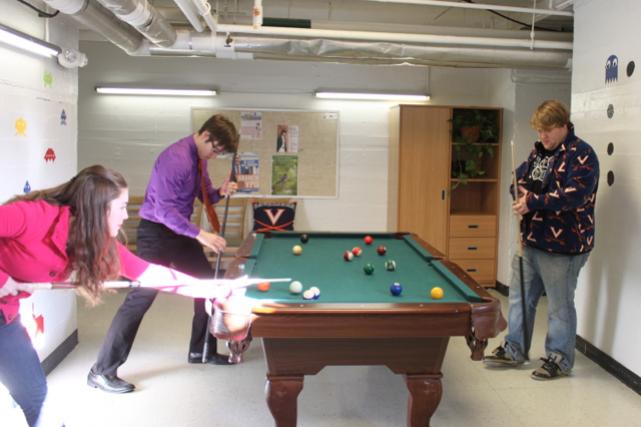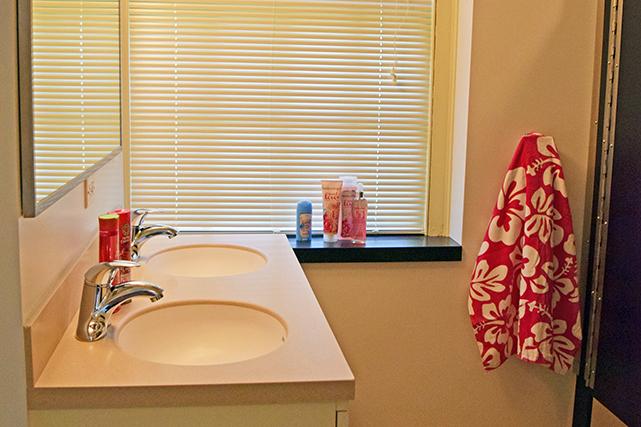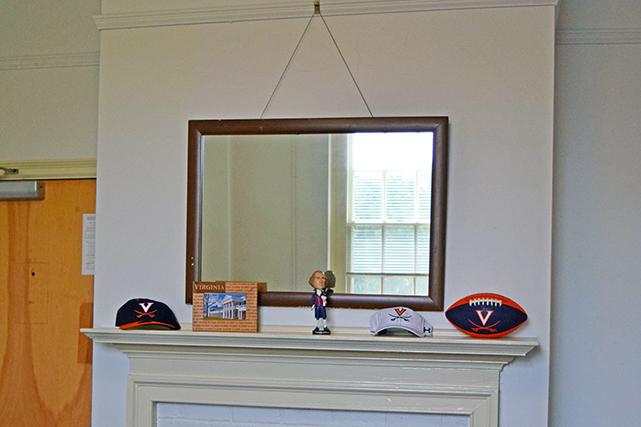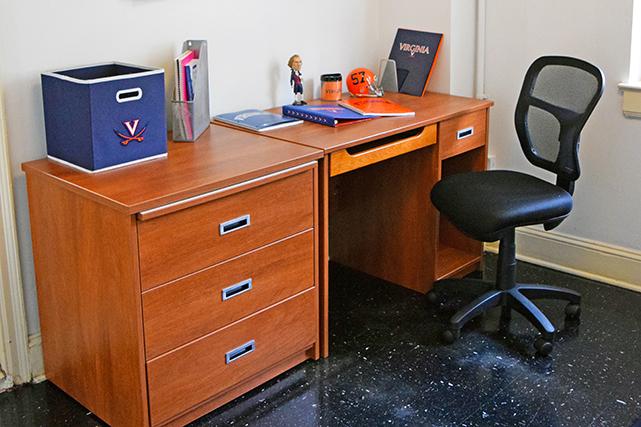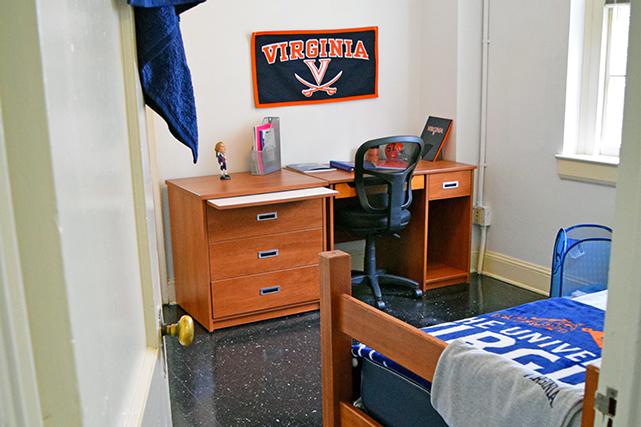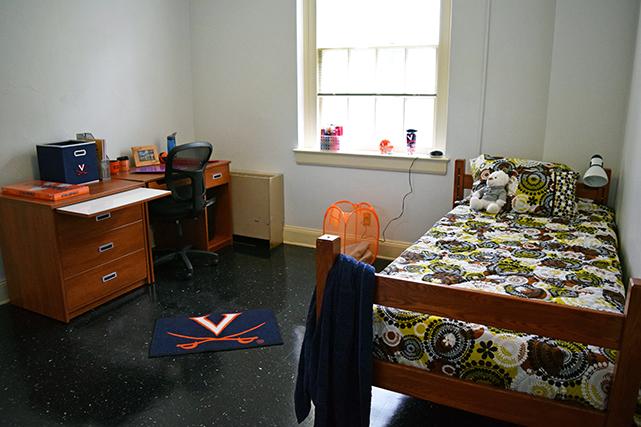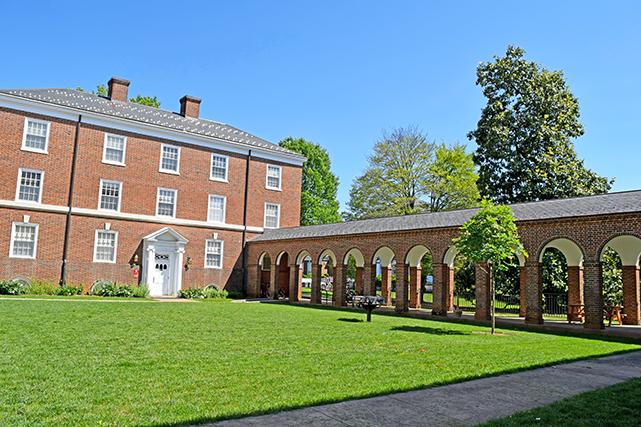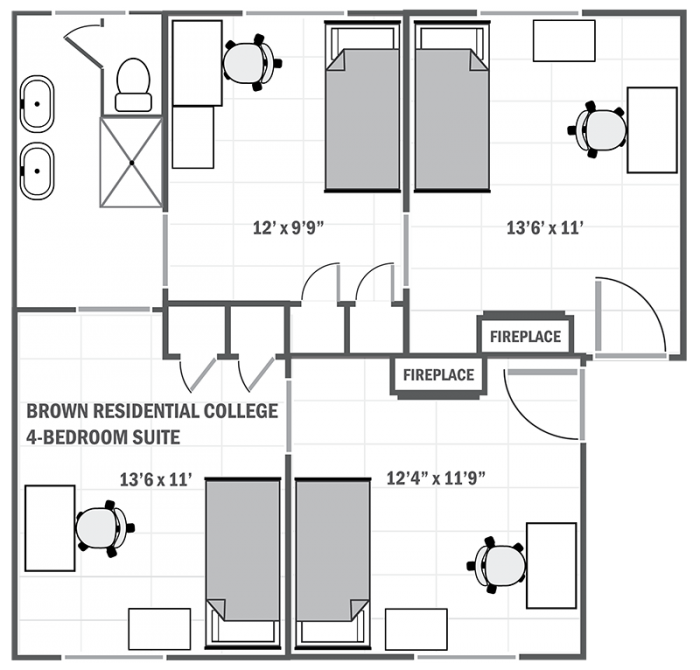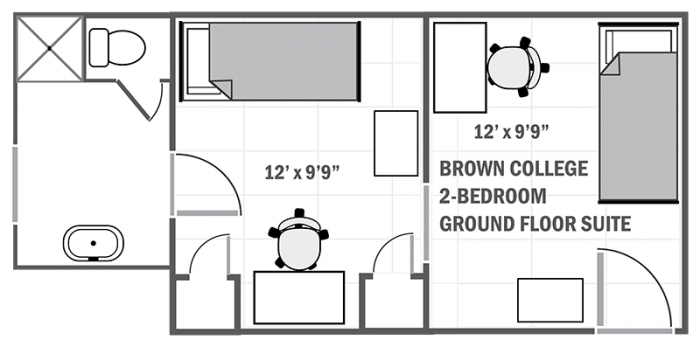What is Brown College Housing Like?
Established in 1986, Brown College was the first of the University’s residential colleges, “living/learning” communities in which students and faculty live and work in close proximity to one another. Led by a Principal of the College and a Director of Studies the College maintains close ties to about 40 faculty fellows from many departments and schools of the University.
Brown is an arrangement of 12 interconnected, air-conditioned buildings called "portals:" Davis, Gildersleeve, Harrison, Holmes, Long, Mallet, McGuffey, Peters, Rogers, Smith, Tucker, and Venable. Each living unit contains two single-occupancy bedrooms and an adjoining shared bathroom.
Brown College requires a separate application in addition to your Incoming or Returning Student Housing Application. Please see Brown College's website for more information. Also note that upperclass students living in Brown College are required to participate in a meal plan.
Brown College rooms and capacities include:
226 semi-private single rooms (1-person), upperclass students: 226 students
56 semi-private single rooms (1-person), incoming first-year students: 56 students
How the Houses Got Their Names
Brown College is named after the George Garvin Brown family, whose endowment to the University commemorates four relatives who attended UVA in the first three decades of the twentieth century.
- Noah Knowles Davis was born in Philadelphia, and came to the University from the presidency of Bethel College in Kentucky. The last professor of moral philosophy at the University, he and his family were the last residents to live in Pavilion VII before it became the Colonnade Club.
- Born in South Carolina, Basil Lanneau Gildersleeve was appointed as chair of Greek before he was twenty-five. He lived in Pavilion I with his family and taught Latin as well as Greek during the Civil War years before leaving to be on the first faculty of John Hopkins University.
- Born in Harrisonburg, Va., Gessner Harrison was one of the University’s first graduates in medicine and ancient languages, succeeding George Long in the School of Ancient Languages in 1828 for what became a 30-year tenure. He died in 1862 of a fever contracted while nursing his stricken Confederate-soldier son.
- Born in Guiana, George Holmes was appointed professor of the University’s new School of History and General Literature in 1857. He would become professor of historical science (1882), later renamed “political economy and of the science of society.” He lived in Pavilion VI.
- A native of England, George Long was a member of the first faculty of the University. After establishing the University School of Ancient Languages, he returned to England in 1828, where he became one of the first faculty members of the University of London.
- William Holmes McGuffey of Pennsylvania came to the University to succeed George Tucker as chair of moral philosophy. During his 28 years here he taught strenuously, produced 3,000 sermons, and wrote the famous series of Eclectic Readers. His home was in Pavilion IX.
- Chemist John William Mallet was born near Dublin. Though a British subject, he rose to a lieutenant-colonel in the Confederate forces as head of ordinance laboratories. He came to the University in 1868, teaching chemistry as applied in industry and agriculture.
- A Virginia native, William Elisha Peters joined Basil Gildersleeve at the University in 1866, the latter remaining the teaching of Greek, the former becoming professor of Latin. Peters and his second wife, Mary Sheffey, lived in Pavilions III and IX.
- William Barton Rogers of Philadelphia came to the University in 1835 as a professor of natural philosophy and chemistry, serving in this capacity until 1853. Following the Civil War, he was a founder and the first president of the Massachusetts Institute of Technology.
- Francis H. Smith of Leesburg, Va. was professor of mathematics from 1851 to 1853, when he was named professor of natural philosophy. Smith’s extended family, which would later include that of daughter Eleanor and her husband Charles Kent, occupied Pavilion V until Smith’s death at age 99.
- A native of Bermuda, George Tucker served in the Virginia General Assembly and the House of Representatives before becoming the University’s professor of moral philosophy. He was also chosen as the first faculty chairman. He and wife Louise Bowdoin Thompson lived in Pavilion IX.
- Born in Virginia, Charles Scott Venable came to the University as professor of mathematics in 1865. Sometimes chairman of the faculty, he had much to do with developing University curricula. He lived in Pavilion VIII and on Monroe Hill.
Amenities & Furnishings
Extra-long twin lofted bed [80" x 36"]
Desk with chair
Closet
Dresser
Wastebaskets
Tile floors
Wireless connection to the University's computer network
Air conditioning
What's Nearby
Newcomb Hall
Mem Gym
Study lounge
Kitchen
Water bottle filling station
Computer lab
TV lounges
Library
Laundry facilities located on the ground floor of Gildersleeve
Map
Floor Plans
(434) 924-4999
Monday-Friday: 9:00 a.m.-4:30 p.m
Mailbox access
Monday-Saturday: 7:30 a.m.-midnight
Sunday: 9:00 a.m.- midnight


